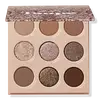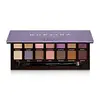What's inside
What's inside
 Key Ingredients
Key Ingredients

 Benefits
Benefits

 Concerns
Concerns

 Ingredients Side-by-side
Ingredients Side-by-side

Synthetic Fluorphlogopite
Talc
AbrasiveBoron Nitride
AbsorbentZinc Stearate
Cosmetic ColorantLauroyl Lysine
Skin ConditioningMagnesium Stearate
Cosmetic ColorantDimethicone
EmollientCaprylic/Capric Triglyceride
MaskingSilica
AbrasivePhenoxyethanol
PreservativeCaprylyl Glycol
EmollientDimethiconol
EmollientEthylhexylglycerin
Skin ConditioningHexylene Glycol
EmulsifyingCI 75470
Cosmetic ColorantIron Oxides
Mica
Cosmetic ColorantCI 77891
Cosmetic ColorantCI 42090
Cosmetic ColorantPolymethylsilsesquioxane
CI 16035
Cosmetic ColorantEthylhexyl Isononanoate
EmollientTrimethylsiloxysilicate
EmollientDimethicone Crosspolymer
Emulsion StabilisingIsopropyl Myristate
EmollientCetyl Dimethicone
EmollientTin Oxide
AbrasiveStearalkonium Hectorite
Gel FormingPropylene Carbonate
SolventCI 77000
Cosmetic ColorantCI 77400
Cosmetic ColorantCI 77491
Cosmetic ColorantAluminum Calcium Sodium Silicate
CI 77163
Cosmetic ColorantTitanium Dioxide
Cosmetic ColorantCalcium Sodium Borosilicate
Magnesium Myristate
Calcium Aluminum Borosilicate
Aluminum Starch Octenylsuccinate
AbsorbentSynthetic Fluorphlogopite, Talc, Boron Nitride, Zinc Stearate, Lauroyl Lysine, Magnesium Stearate, Dimethicone, Caprylic/Capric Triglyceride, Silica, Phenoxyethanol, Caprylyl Glycol, Dimethiconol, Ethylhexylglycerin, Hexylene Glycol, CI 75470, Iron Oxides, Mica, CI 77891, CI 42090, Polymethylsilsesquioxane, CI 16035, Ethylhexyl Isononanoate, Trimethylsiloxysilicate, Dimethicone Crosspolymer, Isopropyl Myristate, Cetyl Dimethicone, Tin Oxide, Stearalkonium Hectorite, Propylene Carbonate, CI 77000, CI 77400, CI 77491, Aluminum Calcium Sodium Silicate, CI 77163, Titanium Dioxide, Calcium Sodium Borosilicate, Magnesium Myristate, Calcium Aluminum Borosilicate, Aluminum Starch Octenylsuccinate
Mica
Cosmetic ColorantSynthetic Fluorphlogopite
Calcium Sodium Borosilicate
Silica
AbrasiveDimethicone
EmollientBoron Nitride
AbsorbentNylon-12
Zinc Stearate
Cosmetic ColorantCyclopentasiloxane
EmollientGlycerin
HumectantPolymethylsilsesquioxane
Vinyl Dimethicone/Methicone Silsesquioxane Crosspolymer
Zea Mays Starch
AbsorbentZinc Myristate
Caprylyl Glycol
EmollientHydrogenated Lecithin
EmulsifyingIsopentyldiol
HumectantLauroyl Lysine
Skin ConditioningPhenoxyethanol
PreservativePolysilicone-11
Tin Oxide
AbrasiveTocopherol
AntioxidantCI 19140
Cosmetic ColorantCI 75470
Cosmetic ColorantIron Oxides
CI 77891
Cosmetic ColorantOctyldodecyl Stearoyl Stearate
EmollientBeeswax
Emulsion StabilisingSodium Polyacrylate
AbsorbentTheobroma Cacao Seed Butter
EmollientCI 77400
Cosmetic ColorantAluminum Calcium Sodium Silicate
Calcium Aluminum Borosilicate
Triethoxycaprylylsilane
Paraffinum Liquidum
EmollientCI 16035
Cosmetic ColorantCI 77491
Cosmetic ColorantPolyethylene Terephthalate
Acrylates Copolymer
Polyurethane-11
Epoxy Resin Coated Aluminum Powder
Cosmetic ColorantCI 77266
Cosmetic ColorantCI 77510
Cosmetic ColorantCI 77007
Cosmetic ColorantCI 77163
Cosmetic ColorantCI 77742
Cosmetic ColorantBlue 1 Lake
Cosmetic ColorantMica, Synthetic Fluorphlogopite, Calcium Sodium Borosilicate, Silica, Dimethicone, Boron Nitride, Nylon-12, Zinc Stearate, Cyclopentasiloxane, Glycerin, Polymethylsilsesquioxane, Vinyl Dimethicone/Methicone Silsesquioxane Crosspolymer, Zea Mays Starch, Zinc Myristate, Caprylyl Glycol, Hydrogenated Lecithin, Isopentyldiol, Lauroyl Lysine, Phenoxyethanol, Polysilicone-11, Tin Oxide, Tocopherol, CI 19140, CI 75470, Iron Oxides, CI 77891, Octyldodecyl Stearoyl Stearate, Beeswax, Sodium Polyacrylate, Theobroma Cacao Seed Butter, CI 77400, Aluminum Calcium Sodium Silicate, Calcium Aluminum Borosilicate, Triethoxycaprylylsilane, Paraffinum Liquidum, CI 16035, CI 77491, Polyethylene Terephthalate, Acrylates Copolymer, Polyurethane-11, Epoxy Resin Coated Aluminum Powder, CI 77266, CI 77510, CI 77007, CI 77163, CI 77742, Blue 1 Lake
Ingredients Explained
These ingredients are found in both products.
Ingredients higher up in an ingredient list are typically present in a larger amount.
This ingredient is a silicate that contains aluminum, calcium, and sodium. It is used to add bulk to formulations and for its anti-caking properties.
Silicates are large particles that remain on the skin's surface.
There are no known cancer or neurotoxicity concerns at typical use levels.
Learn more about Aluminum Calcium Sodium SilicateBoron Nitride is compound consisting of boron and nitrogen. It is used to absorb oil and modify adherence/ slip in products.
This means it is often used in makeup products to help them last longer.
Calcium Aluminum Borosilicate is made up of calcium, aluminum, and silicates. It is a glass-like material. In cosmetics, it comes in the form of flakes or microspheres.
Calcium aluminum borosilicate is a bulking agent, meaning it helps thicken a product.
This ingredient is created by slowly mixing several minerals, including kaolin clay.
Although “aluminum” in an ingredient name can raise red flags for some consumers, the form and usage context matter significantly. For typical topical applications, there is no substantial evidence of health risks - such as cancer, neurotoxicity, or systemic “aluminum overload.”
Learn more about Calcium Aluminum BorosilicateCalcium Sodium Borosilicate is a bulking agent. It is considered a borosilicate glass; it is composed of powder or flakes of calcium and sodium borosilicates.
This ingredient is used to add volume, shine, and color to products. You'll most likely find this ingredient in makeup products.
According to in-vivo and ex-vivo studies done by a manufacturer, this ingredient works well with UV filters:
Learn more about Calcium Sodium BorosilicateCaprylyl Glycol is a humectant and emollient, meaning it attracts and preserves moisture.
It is a common ingredient in many products, especially those designed to hydrate skin. The primary benefits are retaining moisture, skin softening, and promoting a healthy skin barrier.
Though Caprylyl Glycol is an alcohol derived from fatty acids, it is not the kind that can dry out skin.
This ingredient is also used as a preservative to extend the life of products. It has slight antimicrobial properties.
Learn more about Caprylyl GlycolCi 16035 is a synthetic dark-red dye. This dye is created from an acid called Allura red AC, an azo dye.
Azo dyes need to be purified thoroughly before use. This makes them more stable and longer lasting.
This dye is commonly used in foods, approved by both the FDA and EFSA.
Learn more about CI 16035Ci 75470 is a bright-red pigment. It is AKA carmine.
Carmine is derived from insects such as the cochineal beetle. This ingredient has been used as a natural dye for over 2000 years.
This synthetic powder is used to add a pearly/white color in cosmetics.
We don't have a description for CI 77400 yet.
Ci 77491 is also hydrated iron III oxide. It's sole purpose is to give a red/pink hue to products.
Iron III oxides are classified as inorganic chemicals for coloring.
Synthetically created Ci 77491 is considered safer than those naturally found. This is because the synthetically created version may contain less impurities. Iron oxides are generally non-toxic and non-allergenic.
Learn more about CI 77491Ci 77891 is a white pigment from Titanium dioxide. It is naturally found in minerals such as rutile and ilmenite.
It's main function is to add a white color to cosmetics. It can also be mixed with other colors to create different shades.
Ci 77891 is commonly found in sunscreens due to its ability to block UV rays.
Learn more about CI 77891Dimethicone is a type of synthetic silicone created from natural materials such as quartz.
What it does:
Dimethicone comes in different viscosities:
Depending on the viscosity, dimethicone has different properties.
Ingredients lists don't always show which type is used, so we recommend reaching out to the brand if you have questions about the viscosity.
This ingredient is unlikely to cause irritation because it does not get absorbed into skin. However, people with silicone allergies should be careful about using this ingredient.
Note: Dimethicone may contribute to pilling. This is because it is not oil or water soluble, so pilling may occur when layered with products. When mixed with heavy oils in a formula, the outcome is also quite greasy.
Learn more about DimethiconeThis ingredient comes from a fatty acid (lauric acid) and amino acid (lysine). It is used to add a silky feel to cosmetics.
According to a manufacturer, its fatty acid base leaves a silky feeling on the skin. It also has emollient properties because of this. Emollients help soften skin by preventing water from evaporating.
Lauroyl lysine is barely soluble in water.
Learn more about Lauroyl LysineMica is a naturally occurring mineral used to add shimmer and color in cosmetics. It can also help improve the texture of a product or give it an opaque, white/silver color.
Serecite is the name for very fine but ragged grains of mica.
This ingredient is often coated with metal oxides like titanium dioxide. Trace amounts of heavy metals may be found in mica, but these metals are not harmful in our personal products.
Mica has been used since prehistoric times throughout the world. Ancient Egyptian, Indian, Greek, Roman, Aztec, and Chinese civilizations have used mica.
Learn more about MicaPhenoxyethanol is a preservative that has germicide, antimicrobial, and aromatic properties. Studies show that phenoxyethanol can prevent microbial growth. By itself, it has a scent that is similar to that of a rose.
It's often used in formulations along with Caprylyl Glycol to preserve the shelf life of products.
Polymethylsilsesquioxane is a silicone used as a film forming agent.
When applied to the skin, this ingredient creates an invisible film on the surface. This film still allows oxygen to pass through, but prevents moisture from escaping. This can help condition and hydrate the skin. It also leaves a silky feel when applied.
Polymethylsilsesquioxane has not been shown to clog pores. It has been deemed safe to use up to 55%, but most cosmetics use much less.
If you have concerns about using this ingredient, we recommend speaking with a professional.
Learn more about PolymethylsilsesquioxaneSilica, also known as silicon dioxide, is a naturally occurring mineral. It is used as a fine, spherical, and porous powder in cosmetics.
Though it has exfoliant properties, the function of silica varies depending on the product.
The unique structure of silica enhances the spreadability and adds smoothness, making it a great texture enhancer.
It is also used as an active carrier, emulsifier, and mattifier due to its ability to absorb excess oil.
In some products, tiny microneedles called spicules are made from silica or hydrolyzed sponge. When you rub them in, they lightly polish away dead skin layers and enhance the penetration of active ingredients.
Learn more about SilicaSynthetic Fluorphlogopite is the synthethic version of mica. It consists of fluorine, aluminum and silicate.
Synthetic Fluorphlogopite is used to add volume to products.
It is considered non-irritating on the skin.
Learn more about Synthetic FluorphlogopiteTin Oxide is an inorganic oxide used to add opacity and volume to a product. In nature, it is already found in mineral form. The main ore of tin is an opaque and shiny mineral called casseterite.
Tin Oxide helps remove translucency in a product, or make it more opaque. Besides adding opacity, tin oxide is used for bulking to add volume.
Zinc Stearate is the metal salt of stearic acid. It is a white solid used to bind, thicken, and lubricate products.
This ingredient is common in powder makeup, where it helps keep the powder together.
Zinc Stearate is hydrophobic and repels water.
This ingredient can be sourced from non-animal or animal sources. It is best to reach out to the brand to see where they source this ingredient from.
Learn more about Zinc StearateThis ingredient is a combination of red, black, and yellow iron oxide pigments. This combination of colors is usually found in foundation, because it results in a "skin" color.